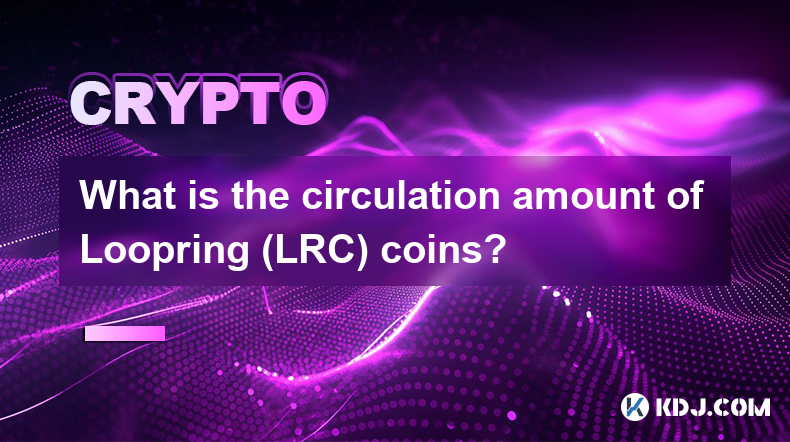-
 Bitcoin
Bitcoin $99,577.7827
2.77% -
 Ethereum
Ethereum $1,933.4035
4.93% -
 Tether USDt
Tether USDt $1.0002
0.03% -
 XRP
XRP $2.2030
2.81% -
 BNB
BNB $616.1256
1.57% -
 Solana
Solana $153.0057
3.62% -
 USDC
USDC $1.0001
0.01% -
 Dogecoin
Dogecoin $0.1830
5.50% -
 Cardano
Cardano $0.7151
4.50% -
 TRON
TRON $0.2505
1.89% -
 Sui
Sui $3.7051
8.86% -
 Chainlink
Chainlink $14.7665
5.95% -
 Avalanche
Avalanche $20.9867
5.45% -
 Stellar
Stellar $0.2722
3.79% -
 Bitcoin Cash
Bitcoin Cash $413.3602
10.19% -
 UNUS SED LEO
UNUS SED LEO $8.7924
1.21% -
 Shiba Inu
Shiba Inu $0.0...01343
4.39% -
 Hedera
Hedera $0.1859
4.67% -
 Toncoin
Toncoin $3.1187
3.38% -
 Hyperliquid
Hyperliquid $21.6882
1.30% -
 Litecoin
Litecoin $91.9648
-1.05% -
 Polkadot
Polkadot $4.2389
6.22% -
 Monero
Monero $291.7538
1.03% -
 Dai
Dai $1.0003
0.01% -
 Bitget Token
Bitget Token $4.3174
-0.22% -
 Ethena USDe
Ethena USDe $1.0004
0.01% -
 Pi
Pi $0.6225
7.32% -
 Pepe
Pepe $0.0...09208
12.98% -
 Bittensor
Bittensor $404.3195
9.62% -
 Uniswap
Uniswap $5.1820
5.18%
What is the circulation amount of Loopring (LRC) coins?
As of 2023, the circulating supply of Loopring (LRC) coins is approximately 1.36 billion LRC, representing freely tradable tokens available in the market.
Dec 08, 2024 at 01:35 pm

What is the Circulation Amount of Loopring (LRC) Coins?
Understanding Loopring and Its Function
Loopring is a decentralized exchange protocol that allows users to trade tokens directly between themselves without relying on a third-party exchange. It employs a zero-knowledge proofs (ZKPs) technology, known as Loopring 3.0, to provide scalability and privacy to the transactions.
Circulating Supply of Loopring (LRC) Coins
The circulating supply of Loopring (LRC) coins, as of 2023, is approximately 1.36 billion LRC out of a total supply of 1.38 billion LRC. The limited supply of LRC coins contributes to its scarcity and potential value appreciation.
Distribution of LRC Coins
The LRC coins are distributed among various stakeholders, including:
- Project Team and Advisors (14%): A portion of the coins is allocated to the project team and advisors who have contributed to the development and operation of Loopring.
- Token Sale (30%): Loopring raised funds through a token sale in 2017, distributing LRC coins to early investors and supporters.
- Ecosystem Incentives (20%): A significant portion of LRC coins is reserved for various ecosystem incentives, such as rewards for staking, liquidity provision, and protocol usage.
- Reserved (36%): The remaining LRC coins are held in reserve by the Loopring team for future development, partnerships, and strategic initiatives.
Determining Circulating Supply
To determine the circulating supply of LRC coins, it is essential to exclude coins held in reserve or locked in staking contracts. The circulating supply represents the freely tradable portion of the total LRC supply.
Importance of Circulation Supply
The circulating supply of LRC coins is a crucial factor in understanding the liquidity and value of the token. It reflects the actual number of coins available for trading and influences the supply and demand dynamics in the market.
Monitoring LRC Circulation
The circulating supply of LRC coins is constantly monitored and updated by various exchanges, trackers, and blockchain explorers. These platforms provide real-time information on the number of coins in circulation, enabling users to make informed trading decisions.
Disclaimer:info@kdj.com
The information provided is not trading advice. kdj.com does not assume any responsibility for any investments made based on the information provided in this article. Cryptocurrencies are highly volatile and it is highly recommended that you invest with caution after thorough research!
If you believe that the content used on this website infringes your copyright, please contact us immediately (info@kdj.com) and we will delete it promptly.
- Binance Coin (BNB) Price Could Increase by 364% to $2,775 by 2028
- 2025-05-08 17:15:12
- David Bailey, CEO of crypto media company BTC Inc. has reportedly raised $300 million to launch a new Bitcoin investment firm
- 2025-05-08 17:15:12
- Bitcoin forges ahead as bulls prepare to test the $100000 price mark
- 2025-05-08 17:10:12
- Memecoins Have redefined Retail Speculation in Crypto Markets
- 2025-05-08 17:10:12
- LockBit ransomware group's dark web affiliate panel was breached, exposing almost 60,000 Bitcoin addresses
- 2025-05-08 17:05:13
- Phoenix Group Plunges into $153M Loss as Digital Assets Crumble
- 2025-05-08 17:05:13
Related knowledge

Is Ethereum smart contract call fee high? How to optimize costs?
May 08,2025 at 09:35am
Is Ethereum Smart Contract Call Fee High? How to Optimize Costs? The world of Ethereum smart contracts has revolutionized the way we think about decentralized applications and blockchain technology. However, one of the most frequently discussed topics within this realm is the cost associated with executing smart contract calls. In this article, we will ...

Is Ethereum Layer2 fee low? How to use it cheaper?
May 08,2025 at 03:56am
The question of whether Ethereum Layer 2 solutions offer lower fees and how to use them more economically is a topic of great interest within the cryptocurrency community. Ethereum's Layer 2 solutions have been developed to address the high transaction fees and scalability issues associated with the main Ethereum network. In this article, we will delve ...

How to calculate Ethereum network fee? How to reduce transaction costs?
May 08,2025 at 02:15am
Understanding and managing Ethereum network fees is crucial for anyone involved in transactions on the Ethereum blockchain. The network fee, also known as gas fee, is the amount of Ether (ETH) required to successfully conduct a transaction or execute a smart contract on the Ethereum network. Calculating these fees and finding ways to reduce them can sig...

What is Ethereum Gas Fee? How to optimize Gas Fee to save costs?
May 08,2025 at 03:43am
Ethereum gas fees are a crucial aspect of interacting with the Ethereum blockchain. Understanding and optimizing these fees can significantly impact the cost-effectiveness of transactions and smart contract interactions. In this article, we will delve into what Ethereum gas fees are, how they are calculated, and provide detailed strategies for optimizin...

How to perform MOVE cross-chain transfer? What to do if the gas fee is too high?
May 07,2025 at 08:03pm
Introduction to MOVE Cross-Chain TransferCross-chain transfers have become an essential part of the cryptocurrency ecosystem, allowing users to move assets between different blockchain networks. One of the popular protocols for achieving this is the MOVE cross-chain transfer. This article will guide you through the process of performing a MOVE cross-cha...

How is the DYDX liquidation price calculated? How is the forced liquidation mechanism?
May 08,2025 at 06:49am
The DYDX liquidation price and the forced liquidation mechanism are crucial aspects of trading on the dYdX platform, a decentralized exchange that allows users to trade perpetual contracts. Understanding these concepts is essential for managing risk and maximizing potential returns. In this article, we will delve into the details of how the DYDX liquida...

Is Ethereum smart contract call fee high? How to optimize costs?
May 08,2025 at 09:35am
Is Ethereum Smart Contract Call Fee High? How to Optimize Costs? The world of Ethereum smart contracts has revolutionized the way we think about decentralized applications and blockchain technology. However, one of the most frequently discussed topics within this realm is the cost associated with executing smart contract calls. In this article, we will ...

Is Ethereum Layer2 fee low? How to use it cheaper?
May 08,2025 at 03:56am
The question of whether Ethereum Layer 2 solutions offer lower fees and how to use them more economically is a topic of great interest within the cryptocurrency community. Ethereum's Layer 2 solutions have been developed to address the high transaction fees and scalability issues associated with the main Ethereum network. In this article, we will delve ...

How to calculate Ethereum network fee? How to reduce transaction costs?
May 08,2025 at 02:15am
Understanding and managing Ethereum network fees is crucial for anyone involved in transactions on the Ethereum blockchain. The network fee, also known as gas fee, is the amount of Ether (ETH) required to successfully conduct a transaction or execute a smart contract on the Ethereum network. Calculating these fees and finding ways to reduce them can sig...

What is Ethereum Gas Fee? How to optimize Gas Fee to save costs?
May 08,2025 at 03:43am
Ethereum gas fees are a crucial aspect of interacting with the Ethereum blockchain. Understanding and optimizing these fees can significantly impact the cost-effectiveness of transactions and smart contract interactions. In this article, we will delve into what Ethereum gas fees are, how they are calculated, and provide detailed strategies for optimizin...

How to perform MOVE cross-chain transfer? What to do if the gas fee is too high?
May 07,2025 at 08:03pm
Introduction to MOVE Cross-Chain TransferCross-chain transfers have become an essential part of the cryptocurrency ecosystem, allowing users to move assets between different blockchain networks. One of the popular protocols for achieving this is the MOVE cross-chain transfer. This article will guide you through the process of performing a MOVE cross-cha...

How is the DYDX liquidation price calculated? How is the forced liquidation mechanism?
May 08,2025 at 06:49am
The DYDX liquidation price and the forced liquidation mechanism are crucial aspects of trading on the dYdX platform, a decentralized exchange that allows users to trade perpetual contracts. Understanding these concepts is essential for managing risk and maximizing potential returns. In this article, we will delve into the details of how the DYDX liquida...
See all articles
























![[2025.05.08] The two routes of Bitcoin continue to be observed, and gold is still bullish. [2025.05.08] The two routes of Bitcoin continue to be observed, and gold is still bullish.](/uploads/2025/05/08/cryptocurrencies-news/videos/routes-bitcoin-continue-observed-gold-bullish/image_500_375.webp)




























































